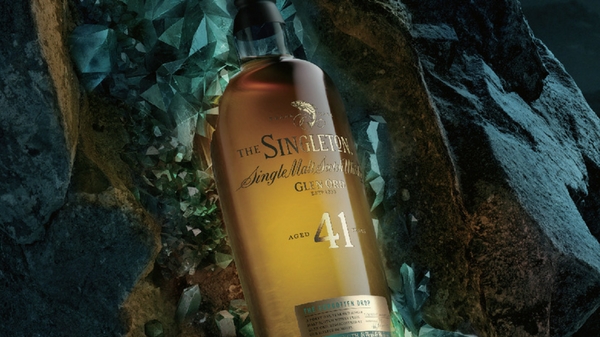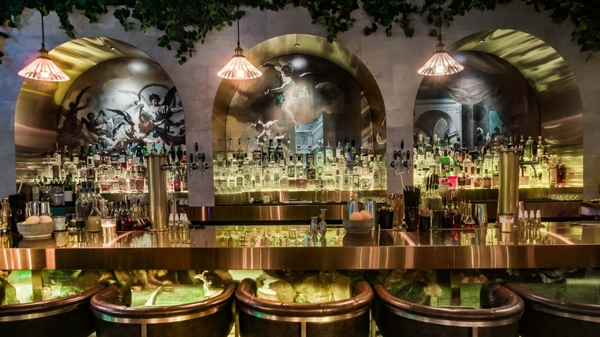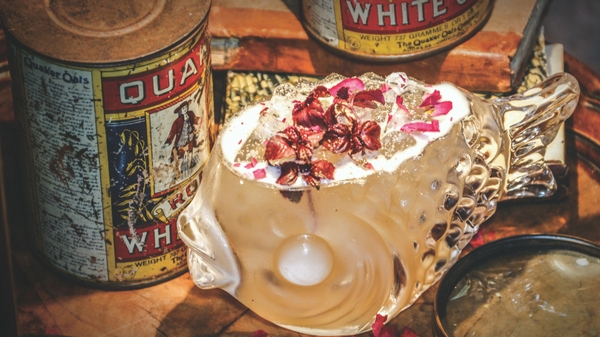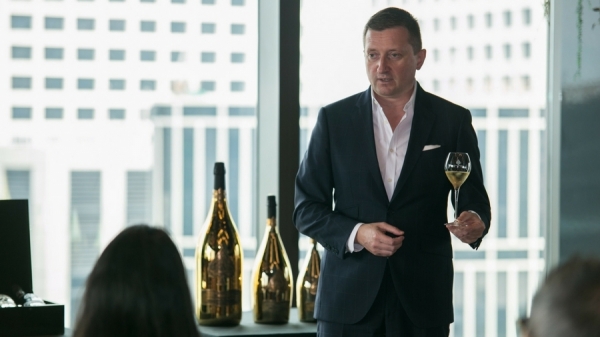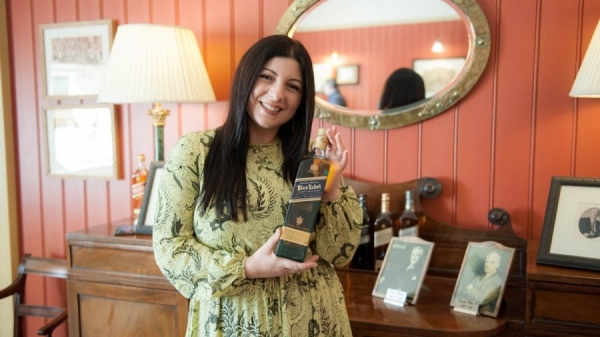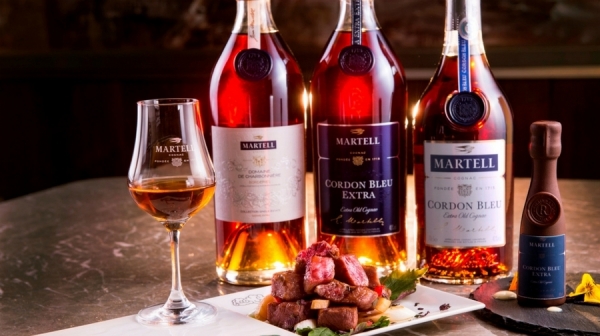
Our Features Editor was invited to an intimate dinner at yuppie favourite izakaya Zuma in the Landmark. Little did she know she was about to dine in the presence of sake royalty: Mr Hideki Sakai of Gokyo Junmai. The Sakai family is famous for brewing the “Five Bridges” sake for centuries.
After a lot of bowing and formal card exchanging, the dinner proceeded more casually than anticipated. Zuma’s downstairs dining ambience helps: high-ceilings, a buzzing after-work crowd, chefs doing their magic in an open kitchen, and floor-to-ceiling windows revealing the energetic street scene of Central by night.

“We stumbled upon the secret to our distinct flavour by mistake,” says Sakai. “Instead of brewing the rice wine in mineral water, which is better for the fermentation process, we accidentally used soft water.” The error resulted in a well-bodied product: equal parts smooth, fruity and crisp.
Sake sommelier Hiroaki Matsuno was also present that evening. He elaborated on the sake pairings alongside the restaurant’s contemporary Nikkei-esque cuisine. According to Matsuno, hiya-oroshi sake is specifically for the autumn season – stored throughout summer and released once the temperature in and out of the brewery matches.

Although winter’s warm sakes and summer’s chilled ginjos are fondly considered, the country’s best brews are said to be those of red-leaf season. Hiya-oroshi is characterised for its mellow and round disposition, the lightest and cleanest of which we tried with the appetisers: Oysters with Ponzu and Chili Daikon and Shima Aji Sashimi Salad with Green Apple Granita.
Little dots at the bottom of the short clear glasses marked the different brews we were trying. At 15% average alcohol content, sake is a match for wine’s 9-16% range, well over beer’s 3-9% ABV, and less than half of vodka’s 40%.
With the chef’s Premium Sushi and Sashimi Selection (course #3 – both a visual and gastronomic work of art), we had the Kyoto-sourced Tsukinokatsura. The smooth-cloudy rice brew also accompanied course #4: Akamutsu, a torched rosy sea bass) with sudachi (citrus) and fresh wasabi.

The fusion seafood pairings of courses #5 and #6 were the best applauded: Chilean Seabass with Green Chili Ginger Dressing and Hokkaido Scallops with umeboshi butter and mentaiko (Alaskan Pollock roe). The distinct and powerful flavours were well matched with Gookyo Junmai’s aromatic and fragrant tones.
The last mains were paired with Gozenshu 9 “Black” Bodaimoto Junmai, which came in a dark bottle more akin to those of cherry dessert wines. This brew (from a famous female wine master) was specifically chosen to go with the meat: a Niigata Snow-Aged Wagyu Sirloin (f1 grade). Surprisingly, the accompanying Maitake Mushrooms (course #8) proved a vegetarian alternative well on par with the meat.

Soup was the last savoury dish: Spicy crab with fresh yuzu and mushrooms. Fantastic and well-balanced, like everything in this dinner. The only over-indulgence came in the form of the Deluxe Dessert Platter, in which Zuma outdid itself with all its best-selling sweets. Do not hold back on this one, it’s worth every single calorie.
Zuma’s Sake Pairing Dinner will be available until the 9th of December. Landmark Level 5 & 6, 15 Queen’s Road Central. (852) 3657 6388. www.zumarestaurant.com
Text: Julienne C. Raboca















